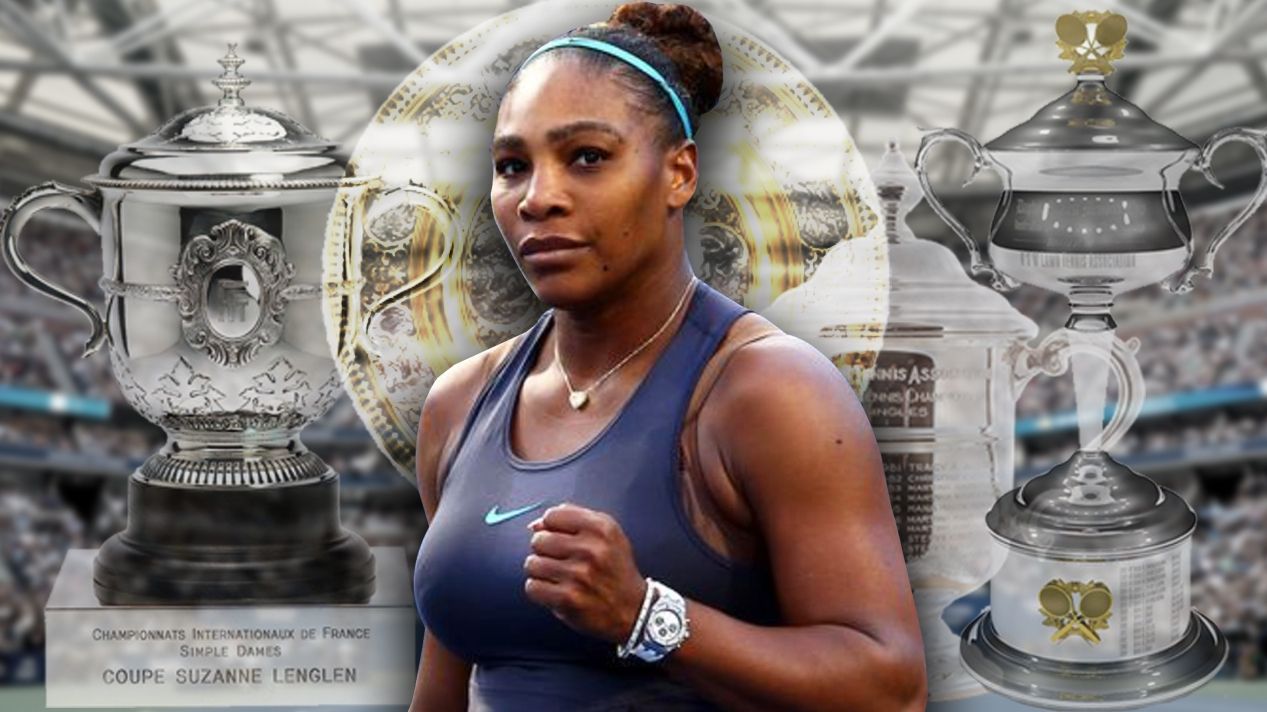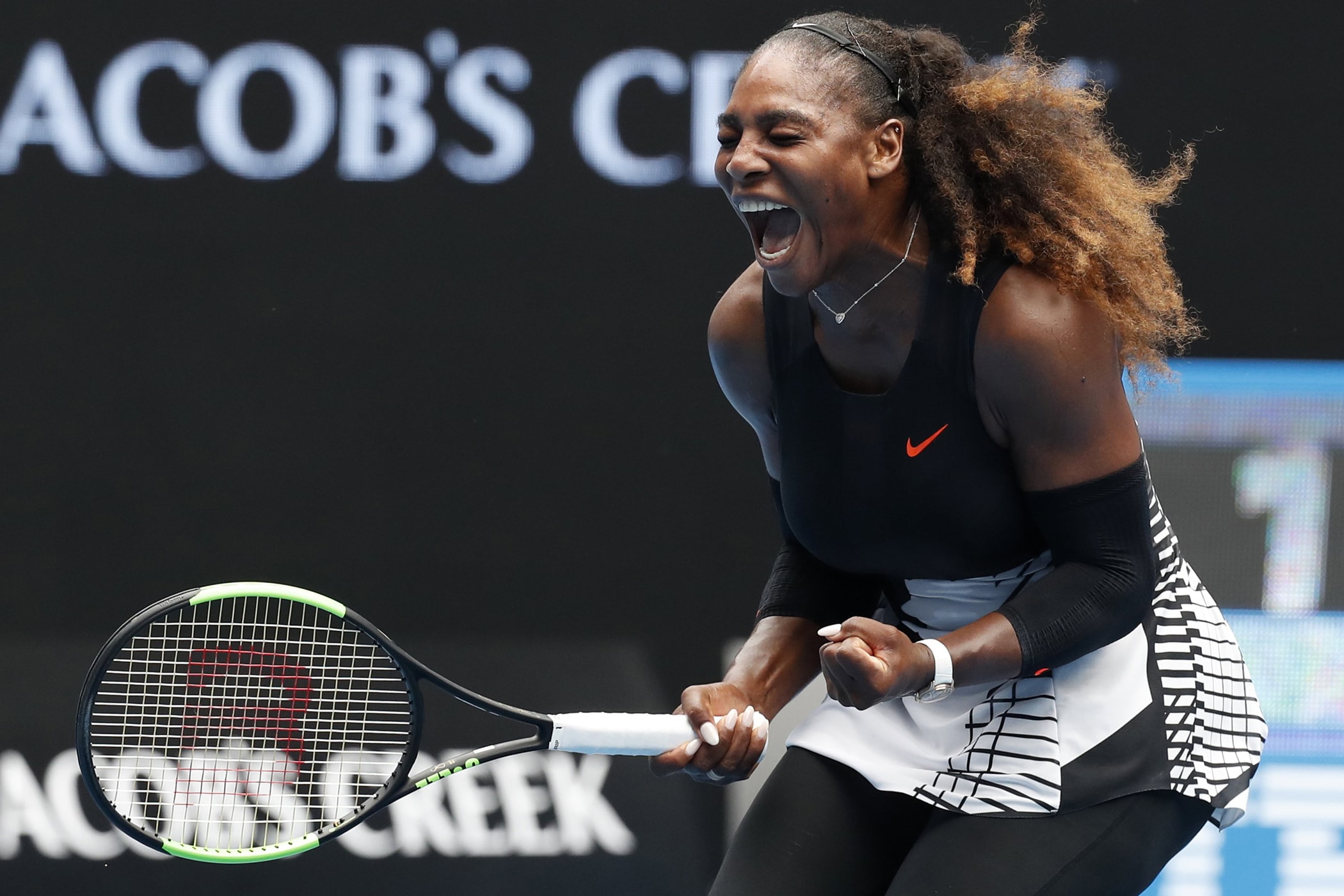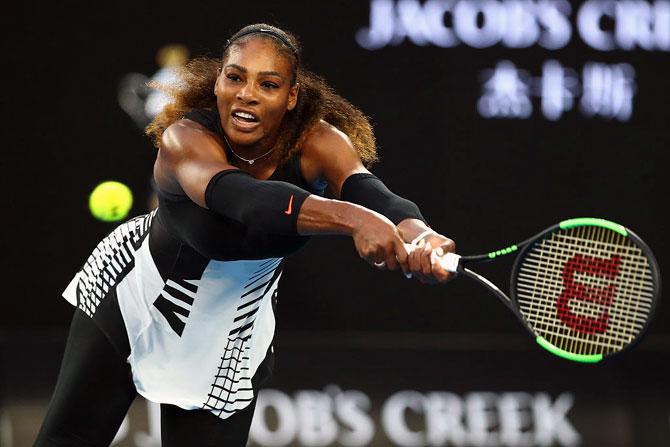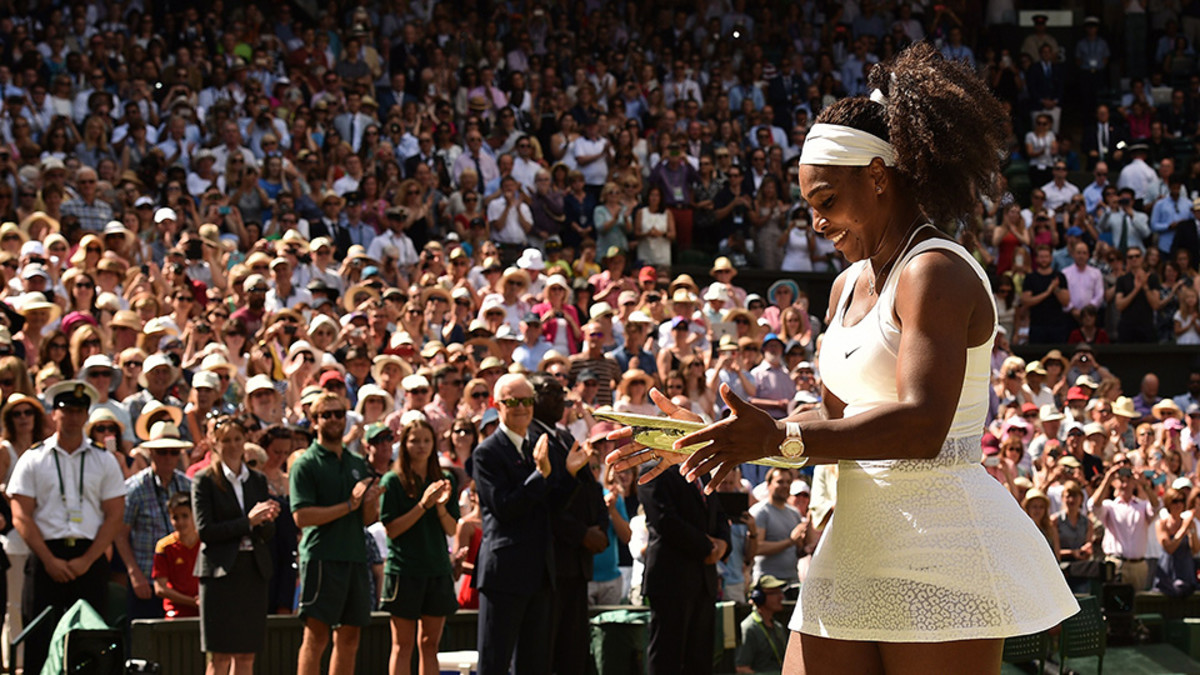Thirteen years ago, a 17-year-old from California blasted her way through this U.S. Open and beat fellow teenager Martina Hingis in straight sets.
She had fiery red fingernails, gold hoop earrings and a wild tangle of white and pink beads in her hair. Serena Williams became the fourth youngest champion here in the Open era.
On Sunday evening, just a few weeks before her 31st birthday, Williams became the U.S. Open champion again. She rallied to beat No. 1 seed Victoria Azarenka in a dizzying match, 6-2, 2-6, 7-5, to become the tournament’s second-oldest champion.
That fine, improbable 13-year arc between titles represents the all-time greatest number of years between Grand Slam singles titles. It was her 15th major title; the rest of today’s active players have a total of 19.
“Three decades? The 90s, the 2000s, the 2010s?” Serena said. “That’s kind of cool. Yeah.”
Saturday night, she read about Pete Sampas’ first and last major titles, here in 1990 and 12 years later in his final match.

“Thirteen years,” Serena said, “is a long time between the first and last.”
When it was over, when Azarenka’s last backhand flew long, Serena fell on her back and lay motionless for a few seconds, covering her face with her hands. Her animated gestures articulated her genuine astonishment.
In recent years (and a few before that, too), the U.S. Open women’s final has been a no-contest affair. In 1995, No. 1 seed Steffi Graf survived a 6-0 second-set drubbing and beat No. 2 Monica Seles in three. Since then, the match-up has been criminally devoid of drama. Sixteen consecutive finals ended in straight sets.

This one was something quite different.
Azarenka recovered from a devastating first set and, surprisingly, forced a third. That frame was a barn-burner; the crowd in Arthur Ashe Stadium was engaged and consistently raucous. To be honest, given all those recent blowouts, it didn’t seem right.
“Being so close it hurts deeply to know you don’t have it, you’re close, you didn’t get it,” Azarenka said afterward. “But at this moment, you know, I have no regrets. I felt like I gave it all there.
“Could it have gone my way? Probably, yes. But it didn’t.”
When her career is over, that sustained excellence will be Serena Williams’ greatest legacy. But when will that be?
This was no last hurrah, like Sampras’ swan song a decade ago. The way she’s playing right now — there is not a single WTA player who can beat her when she’s playing her best — Williams is going to pile up a few more majors.
“I’ve never seen her play better,” said seven-time major champion John McEnroe. “You’re watching, to me, the greatest player to ever play the game. She’s amazing when she’s on.”

McEnroe went on to name the other names in consideration, and it’s true that four women have won more Grand Slam titles. Margaret Court leads all players with 24, followed by Steffi Graf at 22. Serena is suddenly within striking distance of Chris Evert and Martina Navratilova, great friends and rivals who finished with 18 each.
The WTA rankings, released Monday, will claim that Azarenka is the No. 1-ranked player, followed by Maria Sharapova and Agnieszka Radwanska.
This, of course, isn’t so.
This victory ends a run of seven consecutive different women’s Grand Slam champions. It gives Williams the last three titles that matter: Wimbledon, the Olympic gold medal and, now, the U.S. Open.
“It was such a great experience,” Serena said. “Gosh, it really is amazing. I never expected to win all these titles. It’s been fabulous.”
How dominant was Serena in this event?
She won 14 of 15 sets and came into the match having won 45 of the previous 52 games, at one point winning 24 of 25.

Against Azarenka, she stroked 13 aces (compared to Azarenka’s four) and hit 31 one more winners.
Going in, the circumstantial evidence suggested this one might be one-sided. Williams and Azarenka had met 10 times, with Serena winning nine, including the past 12 sets. It was hard to remember that nine months ago, Azarenka won the Australian Open and became the No. 1-ranked player.
Another way to look at it? Azarenka had never lost a major final, having played in just the one.
Azarenka, a 23-year-old from Belarus, won the junior tournament here seven years ago but, curiously, had never advanced past the fourth round at the U.S. Open. She survived difficult three-set matches in the quarterfinals and semifinals and was probably ecstatic when rain and a tornado warning contrived to push the final to Sunday.
The first set was an emphatic one for Serena. She stroked 16 winners to just two for Azarenka. Too many times, Azarenka watched a forehand sail long and, standing on the baseline, slumped her shoulders.

The second set was something completely different. Azarenka broke her straightaway and, suddenly more aggressive, raced away with the frame. Serena seemed to feel the moment a little too powerfully; her nerve disappeared and her fluid movement went with it.
The third was a fairer fight.
Azarenka recorded a break — at love — to take a 4-3 lead in the final set. She backed it up with a hold and found herself serving for the match. In perhaps the most important service game of her life, Azarenka made three errors. And so, the match was even again.
“At this moment it feels like there is no room for a mistake,” Azarenka said. “There is no room for a wrong decision. So it’s absolutely tense and so close that you feel like you have to know what you’re doing.
“You have to trust yourself. I did. I really did. It just felt like a few shots were just, you know, really close or at the top of the net.”

In the second game of the second set, Williams seemed surprised when a foot fault was called. She didn’t convey any immediate emotion, but did sneak a nasty look at the offending linesman when the game was over.
In her past two appearances here beforehand, Serena’s temper hurt her. There was the infamous episode in the 2009 semifinals when a foot-fault call prompted her to threaten a lineswoman, which ultimately cost her the match. Last year, when a hindrance was called during her finals match against Samantha Stosur, Serena berated the chair umpire and was widely criticized for her comportment.
Sunday, she was tested again but held it together. Barely.
“I definitely gave my all today,” Azarenka said. “You know, stepping out of this court today I will have no regrets.
“At the moment it’s tough. But Serena deserves to win. I’m honored to stand with such a champion here.”
Coming back so many times, coming back from the adversity of so many health scares a year ago, Serena said, “That really defines a champion.”
News
THE UNEXPECTED CONNECTION Of The Newest Guest On Diddy’s Parties Guest List: The Secret Behind Lady Gaga’s Success
In a surprising twist in an already high-stakes legal drama, global music superstar Lady Gaga took the witness stand and stunned the courtroom with revelations about hip-hop mogul Sean “Diddy” Combs. Known for her outspokenness and over-the-top personality, Gaga held…
Serena Williams’ Decision To Withdraw Has Closed A Brilliant Chapter In Women’s Tennis History, But Opened A Meaningful New Chapter In Her Life.
Women who changed sport: Serena Williams’ unbending will to win made her a global icon – and record-setting star. The 23-time major champion set record after record in her nearly three-decade-long career, charting a new path for herself – and…
Marc Anthony BREAKS DOWN Over His Son’s DNA Results, JLo Knew. No one FORGIVENESS
In a shocking turn of events that has left fans reeling, Latin music legend Marc Anthony has publicly broken down over the recent revelation regarding his son’s DNA results—a revelation that has shaken his family to its core. The emotional…
Megan Thee Stallion CRIES After Ari Fletcher Releases Evidence Of Affair With Moneybagg Yo
Megan Thee Stallion Sparks Drama: Alleged Affair with Moneybagg Yo Raises Eyebrows. Megan Thee Stallion, known for her bold personality and chart-topping hits, has recently found herself at the center of fresh controversy. Allegations have emerged suggesting she’s rekindling a…
Beyonce Breaks Down After Shocking Photos of Diddy Leaked at Private Party: Jay-Z’s Cruel Reaction
The world of celebrity news is abuzz with the latest scandal involving megastars Beyoncé, Jay-Z, and Sean “Diddy” Combs. Shocking photos allegedly showing Diddy at a private party have recently surfaced, causing a stir on social media and prompting an…
Rihanna EXPOSES Chris Brown & Diddy: Tapes Dropped After Threats!
In a stunning turn of events, Grammy-winning artist Rihanna has reportedly taken a bold stance, releasing information that shines a light on alleged past conflicts with two of the most prominent figures in the music industry: Chris Brown and Sean…
End of content
No more pages to load











